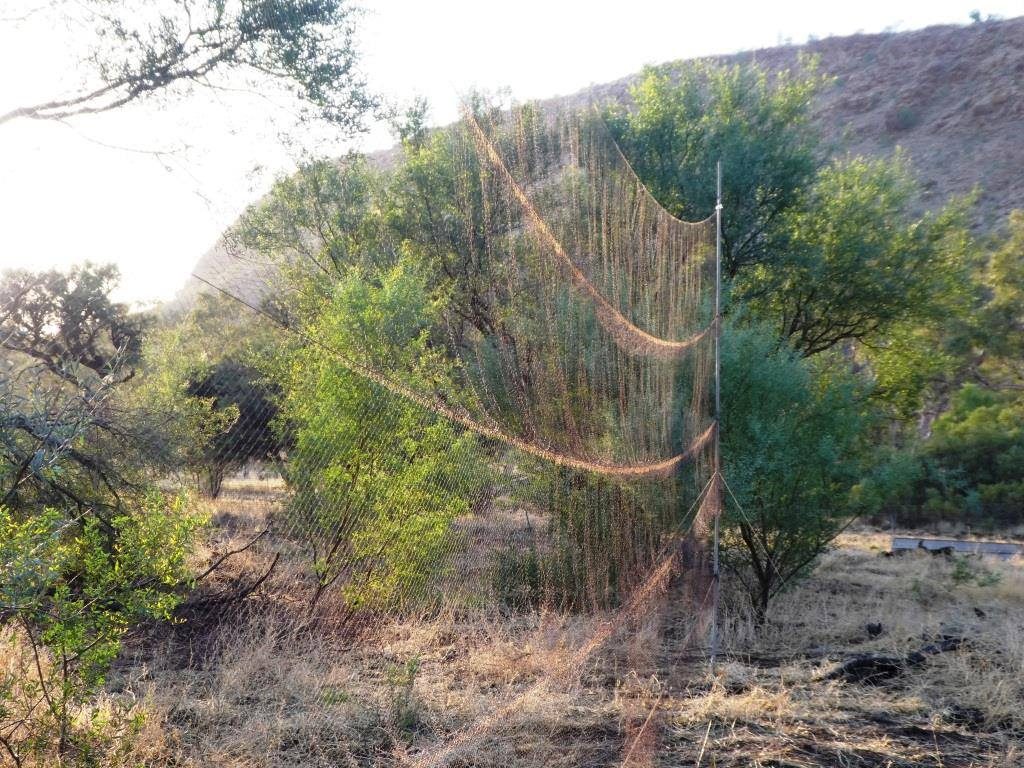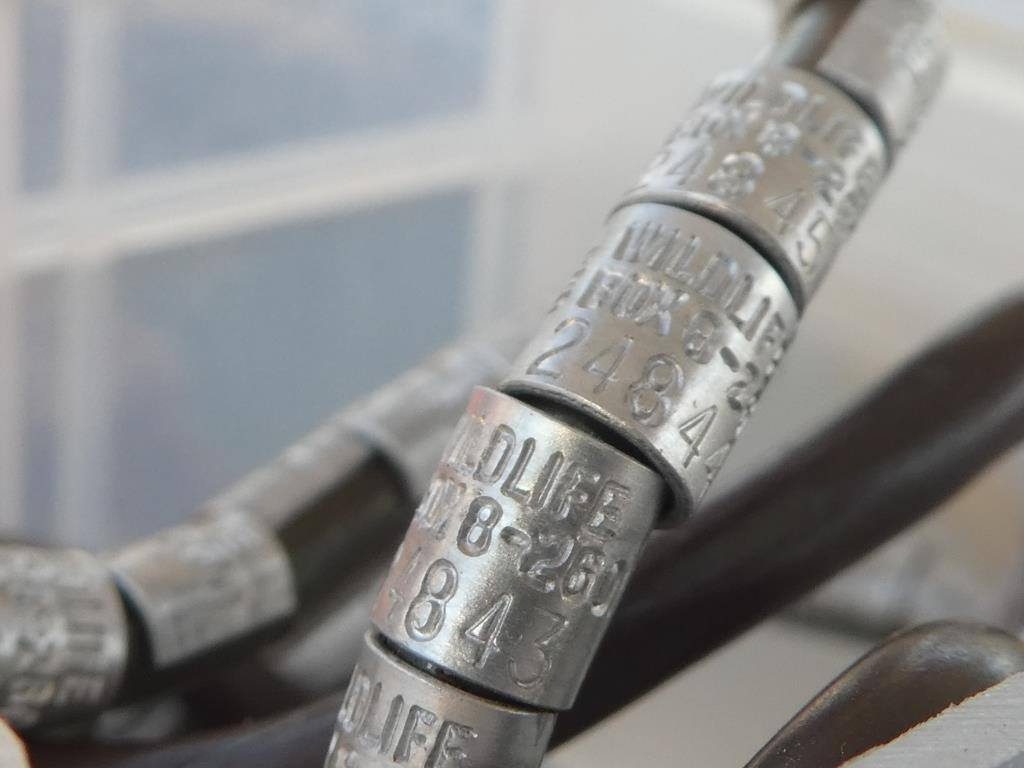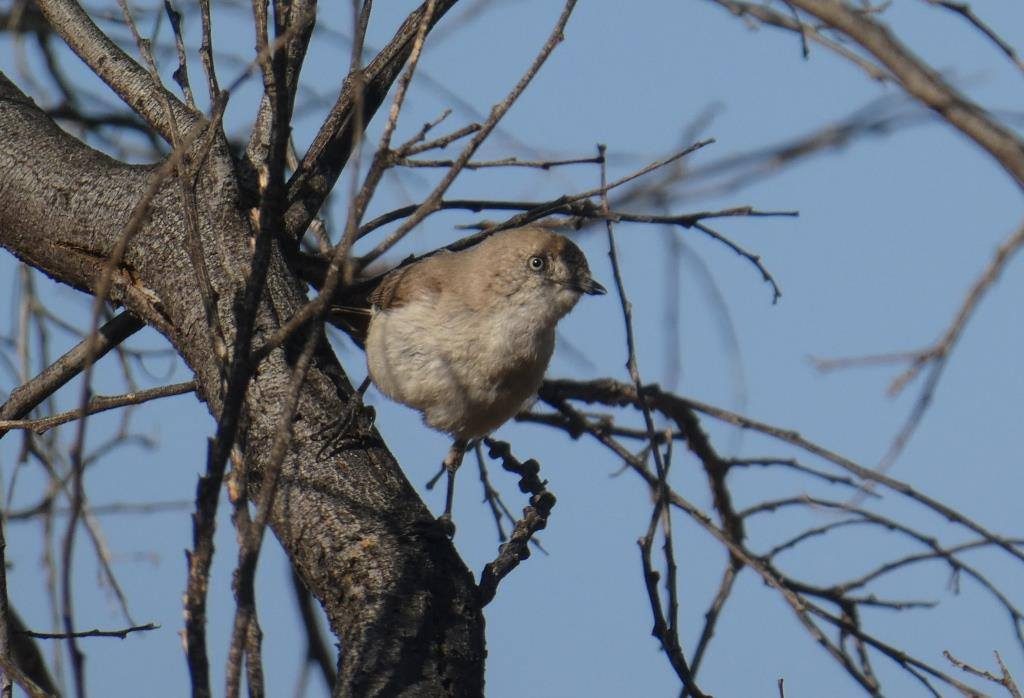As part of National Bird Week 2017 (inspired by the Birdlife Australia Aussie Backyard Bird Count), Land for Wildlife conducted a mist netting workshop for members on a rural property in White Gums. Bird banding is an activity that requires the bander to be trained to handle birds and trap them in an ethical and humane manner with mist nets. Bruce Pascoe, a local bird bander with an A-Class authority, conducted the mist netting and banding and explained the processes to the keen birders in attendance.
The mist netting workshop started shortly after sunrise, on a cool October morning, with the intention of seeing some birds up close and personal. A secondary intention was to observe and survey some of the species that can be found in the region. The final objective was to place band the captured birds so that they can be released and potentially recaptured down the line.
Three nets were set up from the evening before the workshop. On arrival, attendees were shown how to unfurl a net in preparation for a survey and the reasoning behind mist netting and banding captured birds. Mist netting and the subsequent bird banding allows us to see how many species and individuals reside in an area, their lifespan, migration habits, movement to feeding grounds and other long-term demographic questions. The data obtained is important for bird conservation, as well as help to guide habitat preservation activities.
Bird banding in Australia is governed by the Australian Bird and Bat Banding Scheme (ABBBS), who supply numbered metal bands to registered and qualified banders. These bands are fitted around the tarsus (lower leg) of the captured bird. The process is painless and doesn’t cause distress to the birds. According to the ABBBS, over 2.6 million birds and bats have been banded Australia-wide, with 140,000 having been recaptured.
Other detailed information such as physical characteristics (sex, age, moult), and body length measurements (beak, wing) are obtained from the bird before it is released. For example, the head length can be used to determine sex in some species, but also age. The sex of a bird can also be determined from the plumage colouration or cloacal protuberance and brood patch shape. Feather wear and shape is a good indicator of the age of the bird, but many other characteristics can also be used. Anatomical features of birds, their moult and how to age birds can be found in an excellent section of Birds of the World.
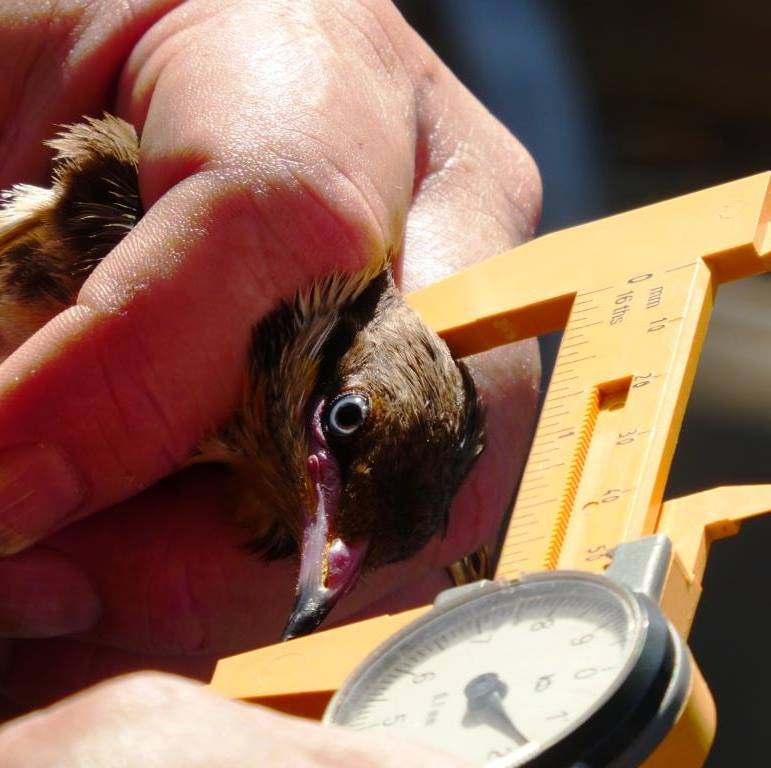
While the going was slow to start, a fourth net was set up to the north of the property and this was successful at capturing three birds – two Yellow-throated Miners (Manorina flavigula) and a Spiny-cheeked Honeyeater (Acanthagenys rufogularis). Both species received size 05 alloy bands and measurements were taken. You can view summaries on the capture/recapture history of the Yellow-throated Miner and Spiny-cheeked Honeyeater on the ABBBS website.
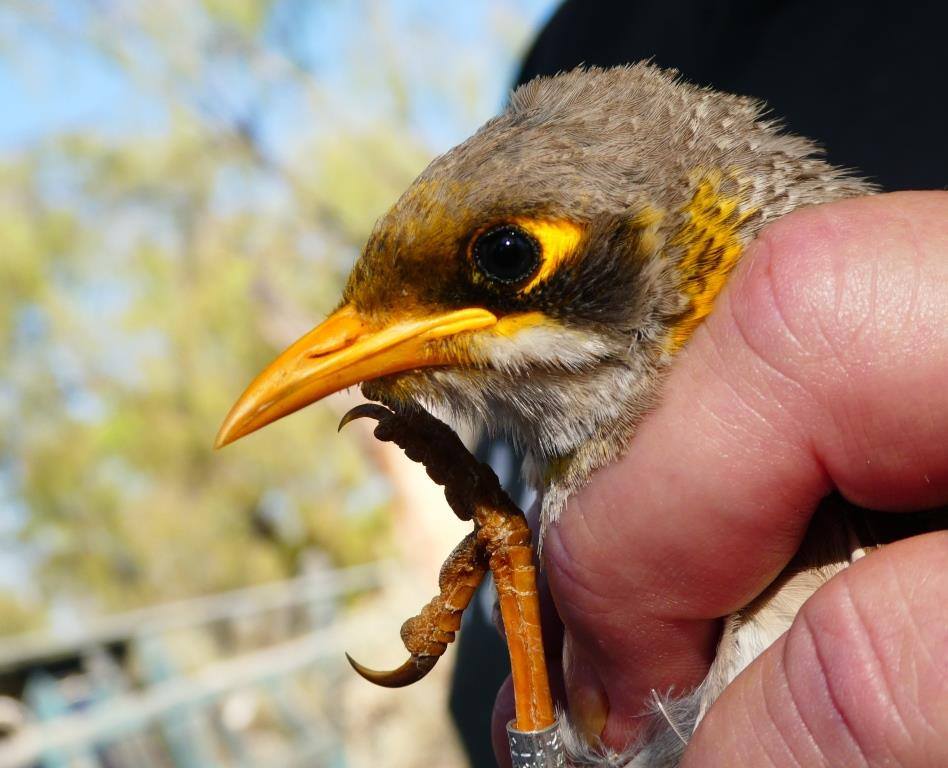
To learn more about the species biology, head to the Birdlife Australia listing for the Yellow-throated Miner and Spiny-cheeked Honeyeater.
Interested in birds and don’t know where to start your journey? Get in touch with Birdlife Central Australia (centralaustralia@birdlife.org.au) or follow their facebook page to keep posted about bird sightings in the Alice Springs area.
This biodiversity survey was conducted with Animal Ethics approval (Charles Darwin University Animal Ethics 12006 Landscape, fauna and flora survey and impact assessment in relation to mineral and petroleum exploration, infrastructure development and conservation initiatives throughout the Northern Territory), a Parks and Wildlife Commission NT permit (60855 Permit to Interfere with Protected Wildlife) and a Department of Primary Industry and Resources permit (026 Licence to Use Premises for Teaching or Research Involving Animals). An A-Class bird banding ticket was held by Bruce Pascoe, who oversaw the survey.
We thank Cyd Holden and Peter Latz for allowing the Land for Wildlife team to visit and monitor the bird populations on their property. Appreciation goes to Bruce Pascoe for the use of mist nets and assisting with the workshop proceedings.
Categories:
Biodiversity, Bird, Bird Watching, Morphology, Survey, Trapping, Workshop
